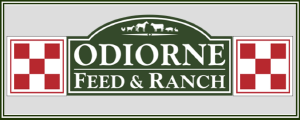 Weed Control for Hay and Pasture Weeds: Here are some helpful tips for weed management in forages are presented in a simple/straight-forward fashion for your convenience.
Weed Control for Hay and Pasture Weeds: Here are some helpful tips for weed management in forages are presented in a simple/straight-forward fashion for your convenience.
Established hay and pasture
The flowering stage is an excellent time to attempt some control of poisonous perennial plants. A number of common plants can be poisonous when eaten in sufficient quantity by livestock, so monitor those pasture and hay fields closely. Remember that perennial weeds are most sensitive to control with a systemic herbicide when they are in the bud to bloom stage and in late summer. Biennials including musk and plumless thistle, burdock, wild carrot, etc. should be treated before they begin to bolt (they are bolting now or very soon) and the smaller the better. Late fall or early spring is even a better time to treat them. And finally, control summer annual weeds as soon after they emerge as possible when they are most sensitive to chemical control. Below are some guidelines to provide a quick management summary for some common weeds of pasture.
Management guidelines for some problem weeds of pastures:
Annuals
Winter annuals (Mustard species, common chickweed, etc.)
- Mow after bolting to prevent seed production.
- Apply an effective herbicide in fall or spring prior to bolting.
- Most winter annuals emerge by late fall – a smaller percentage will emerge in early spring.
- Prevent seed production to prevent spread.
Summer annuals (Pigweed species, common lambsquarters, common ragweed, etc.
- Keep pasture full and competitive.
- Mow after bolting to prevent seed production.
- Apply an effective herbicide in early summer.
- Prevent seed production to prevent spread.
Biennials
Biennials (common burdock, bull and musk thistle, poison hemlock, etc.
- Mow after plants have bolted but before seed set to prevent seed production.
- Remove or dig individual plants by hand.
- Apply an effective herbicide to rosettes in the spring or fall.
- Prevent seed production to prevent spread.
- Several insect biocontrol tools may help with thistles in the future.
Perennials
Creeping perennials (Canada thistle, horsenettle, etc.)
- Mow to suppress vegetative growth and prevent seed production.
- Spray with an effective systemic herbicide at bud to bloom stage or in early fall prior to frost.
- Most perennials spread by both seed and vegetative structures.
Woody perennials (multiflora rose, autumn olive, etc.)
- Mow to suppress and prevent seed production – remove roots by hand or with heavy equipment.
- Spray with an effective systemic herbicide at bud to bloom stage or in early fall.
In conclusion, Odiorne offers a large variety of garden supplies, fertilizers, plants, and preventative care for your lawn. Keeping your pasture, lawn, or garden free from bugs and weeds is important. Our selection of herbicides, insecticides and pest traps will have you in control of these pesky critters. See our herbicide/insecticide section here.
Article Source: Penn State Extension
